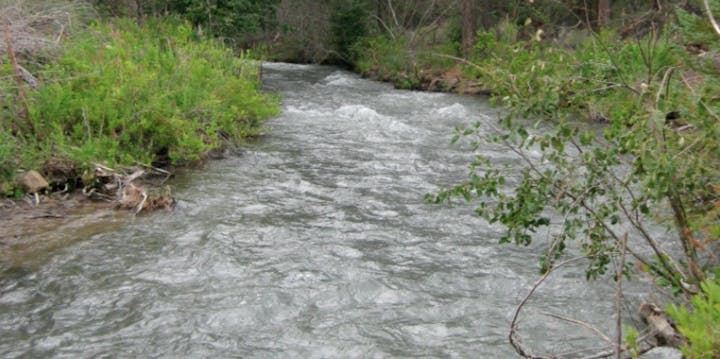Main Canal
20 Years of Collaborative Partnerships
1997-2020 and beyond!
Prior to 1997 the majority of Thee Sisters Irrigation District’s 64 miles of canals and private laterals were open and losing over 50% of the water diverted from Whychus Creek to seepage and evaporation. Most of TSID’s water users had electric surface pumps that pumped from delivery ponds or directly from the canals to irrigate the 7,600 acres of irrigated farm ground in the District. Over 1,000 acres, on a dozen properties in the District, were irrigated by flood application. TSID partnered with USDA’s Natural Resource Conservation Service (NRCS) in 1997 to prioritize piping on farm private laterals serving flood irrigated farm land. In 2000, TSID entered into cooperative grant agreements with the Bureau of Reclamation (BOR) and Deschutes River Conservancy (DRC) to install gauging stations and measuring devices through the Water Conservation Field Services program. This laid the groundwork for developing a System Optimization Review that the district used to develop an Agricultural Water Management and Conservation plan. The plan included piping the entire district, developing SCADA and telemetry, installing a state of the art fish screen and channel restoration (including fish passage), and improving on farm efficiencies through NRCS EQIP and AWEP programs. TSID partnered with NRCS and BOR under their Bridging the Head Gates Memorandum of Agreement. Through this partnership, NRCS provided the design and engineering to pipe the 30 miles of TSID Main Canals. Through NRCS’s Agricultural Watershed Enhancement Program (AWEP) and Regional Conservation Partnership Program (RCPP) funding was made available to farmers for private laterals and on farm projects. NRCS provided the design and engineering for these projects.
In 2006, the Deschutes River Conservancy, Deschutes Land Trust, and Upper Deschutes Watershed Council (Deschutes Partnership) developed a comprehensive restoration strategy to guide habitat restoration in support of steelhead reintroduction. This strategy set the broad goal of restoring the habitat conditions necessary to support self-sustaining populations of summer steelhead and spring Chinook in Whychus Creek. TSID worked with the Deschutes Partnership to restore flows to Whychus Creek.
In May of 2010, the McKenzie Pipeline project went live and TSID began delivering pressurized water to 2,000 acres in Lower Bridge eliminating 38 pumps conserving almost 3,000,000 kWh per year.
TSID was shovel when the American Recover and Reinvestment Act was implemented. With ARRA and the help of BOR and Interior, as well as many other state, federal and NGO partners, we were able to pipe 3.77 miles of canal, starting at the diversion, with double 54" HDPE pipes, install a state of art fish screen, create passage, and assist with channel restoration. This set the stage for TSID to build a 700kw Francis Turbine at Watson Reservoir. The Watson Hydroelectric plant was constructed during the summer of 2014 and went on line in August of the same year. The facility will produce approximately 3,100,000 kWh, which is enough green power to serve 300 homes during the irrigation season, March-November.
Accomplished Success
- Improved control of water in conveyance and delivery system. All 193 farms will be metered.
- Pressurization of delivery to irrigators.
- Electrical power conservation. Over 9 million kWh conserved annually.
- Increased economic inputs into the local community. Currently TSID’s farmers are spending an additional 1-2 million dollars annually with delivery of pressurized water on farm.
- Water Conservation – Elimination of existing canal seepage and evaporation. Improved water delivery of up to 25% during low flow periods and drought.
- Augmented in-stream flows in Whychus Creek that will benefit Redband and Bull Trout, Chinook and Fish Conservation. Installation of a state of the art Farmer’s Conservation Fish Screen.
- Three Hydro facilities generating clean, green, renewable energy. When all 3 plants are completed TSID will be generating 4 million kWh annually.
- As of 2020 TSID will be carbon neutral with the energy generation, conservation and crops grown.
The protected stream flow is benefitting the Anadromous Re-introduction in the Upper Deschutes basin. The conserved water will improve fishery habitat in Whychus Creek while improving the economic sustainability of agriculture in the Three Sisters Irrigation District. These projects help the agricultural community meet the requirements under the Clean Water Act and the Endangered Species Act by lowering elevated stream

